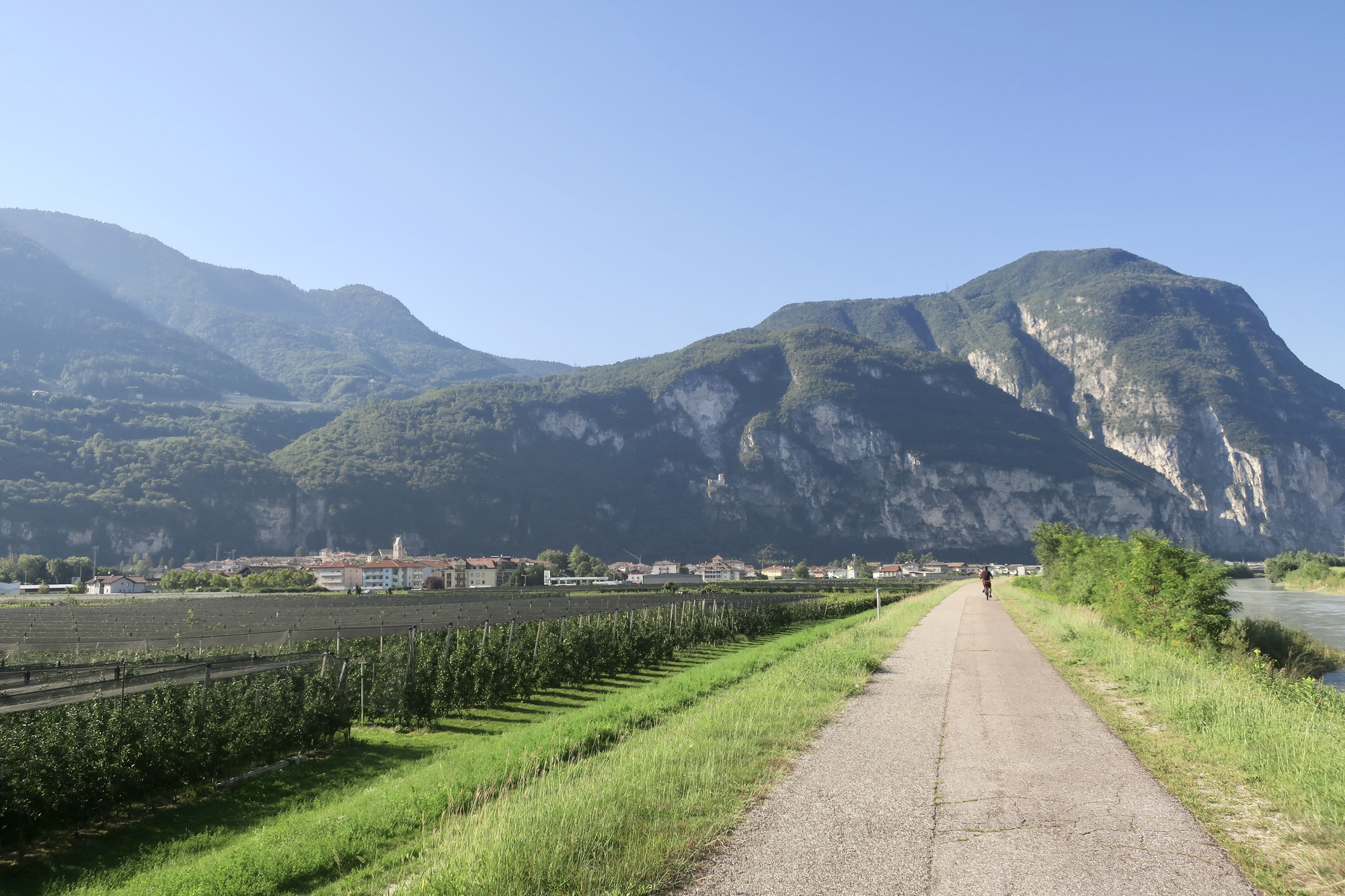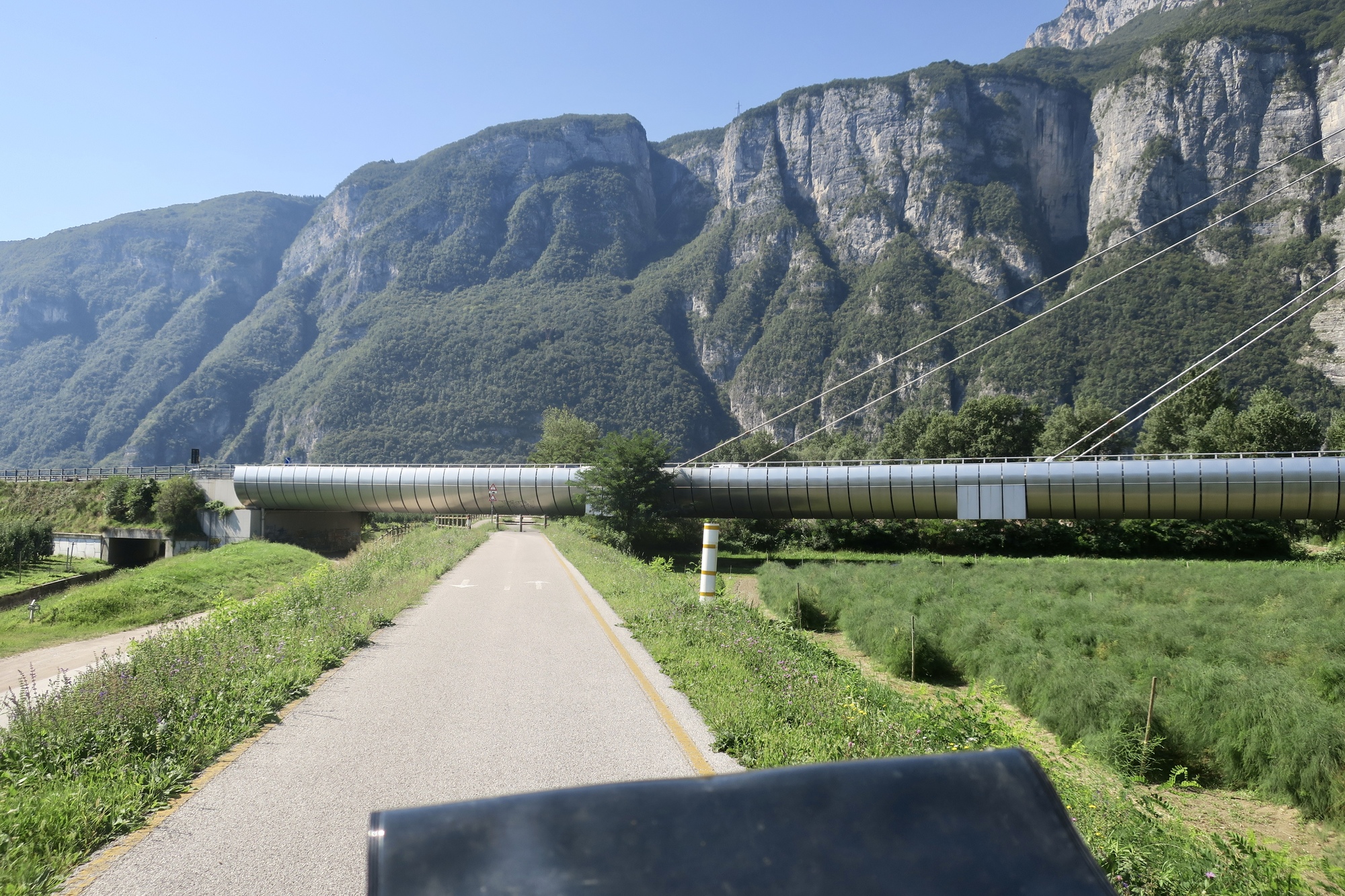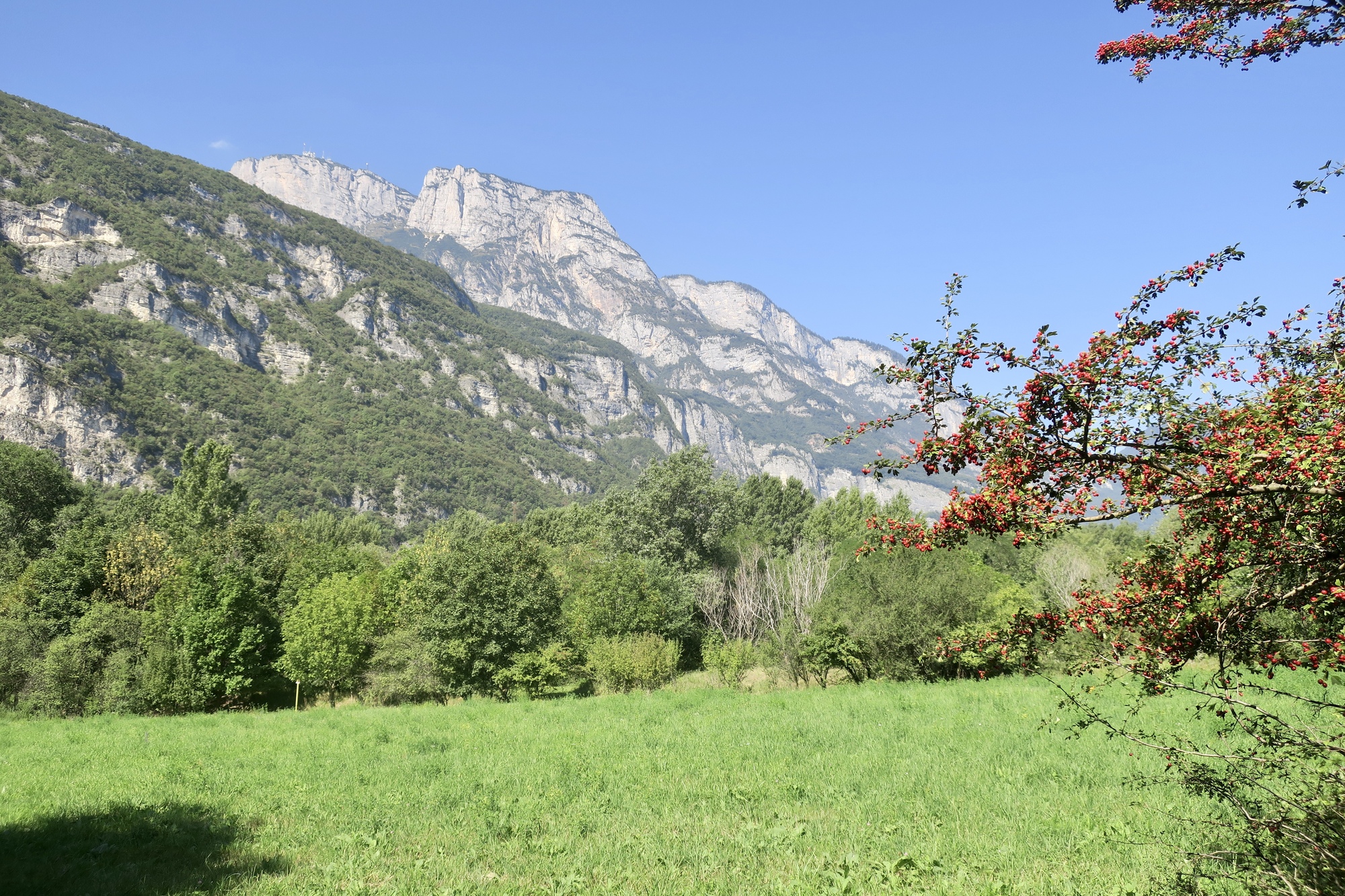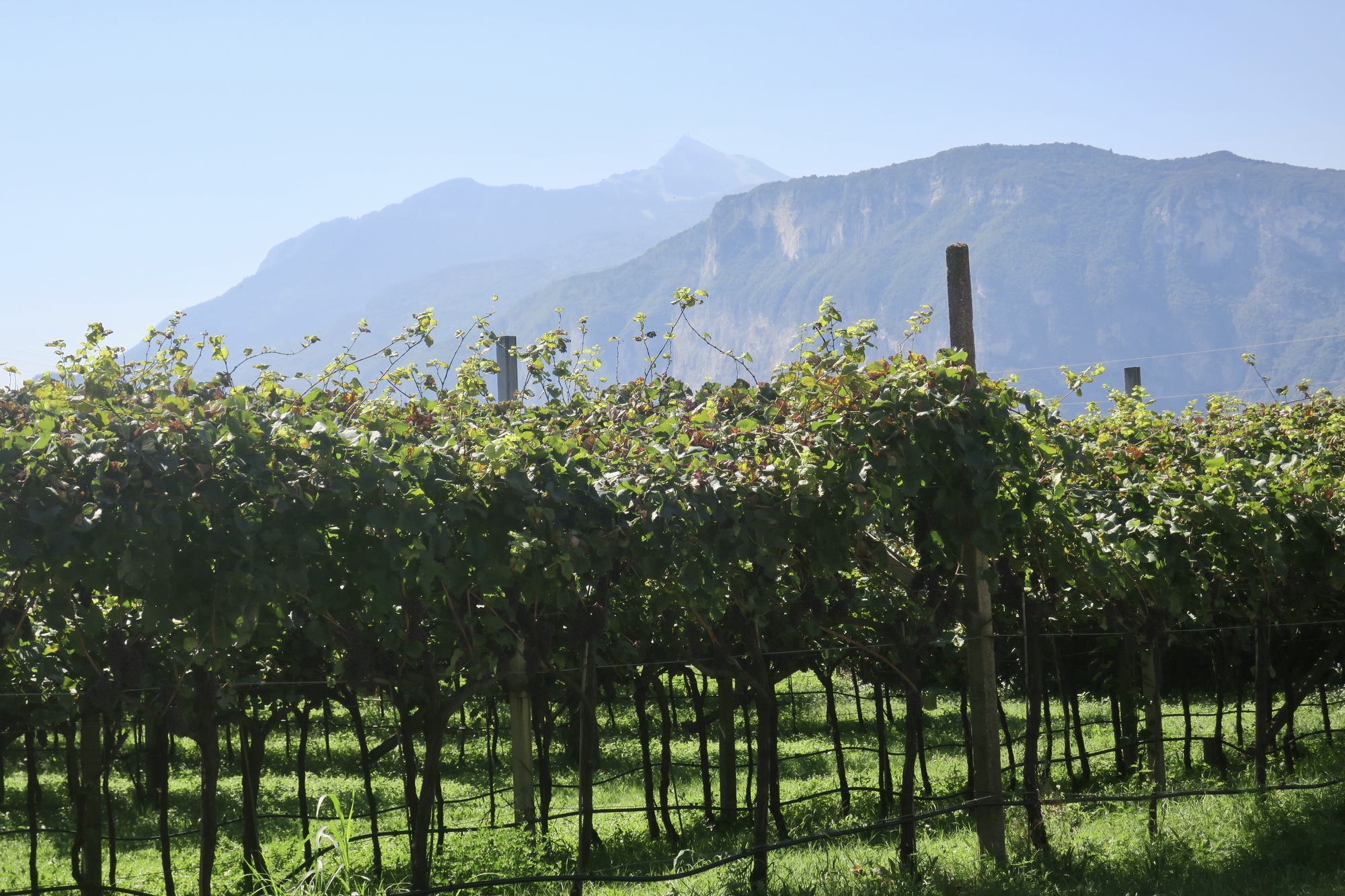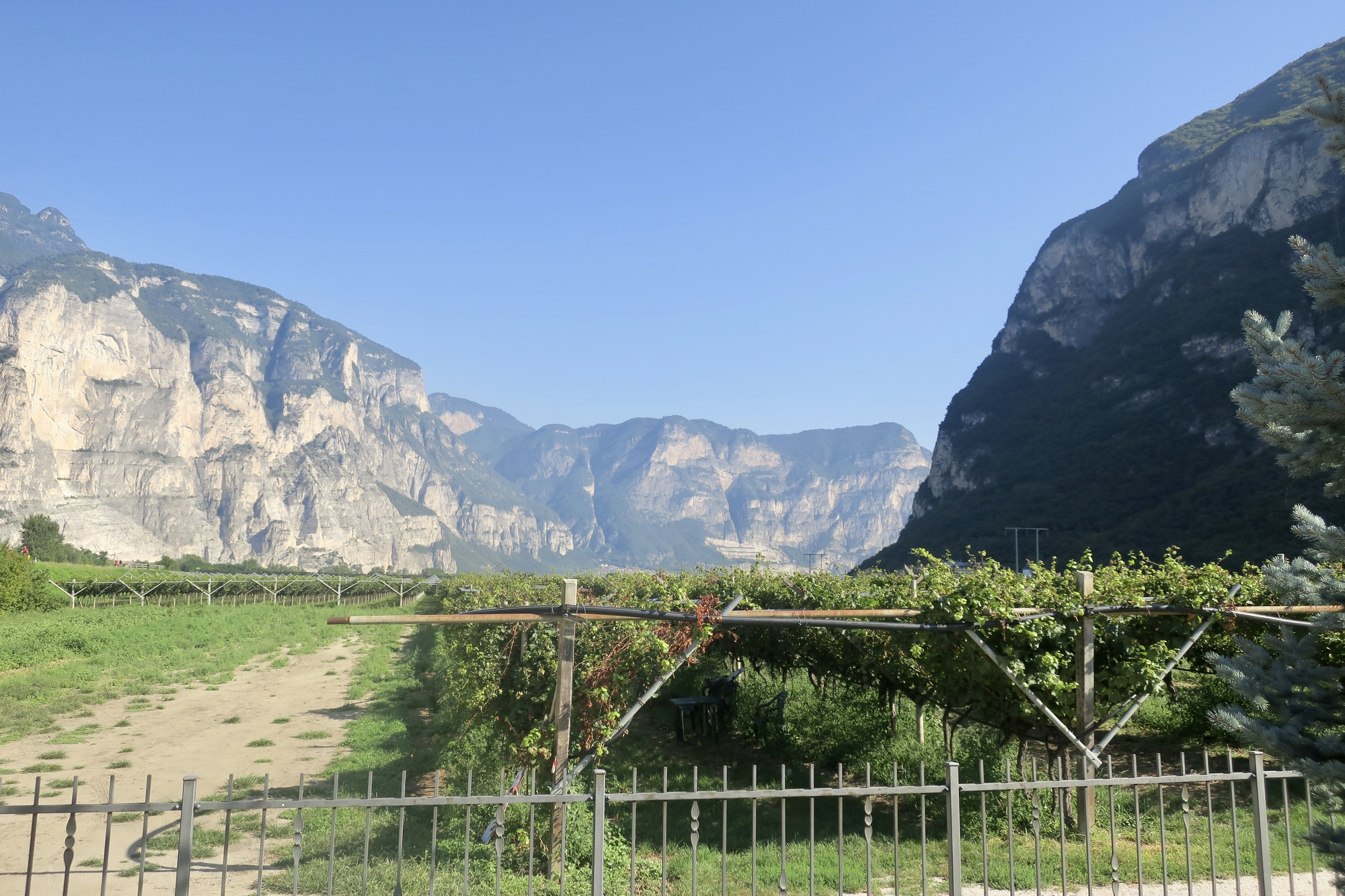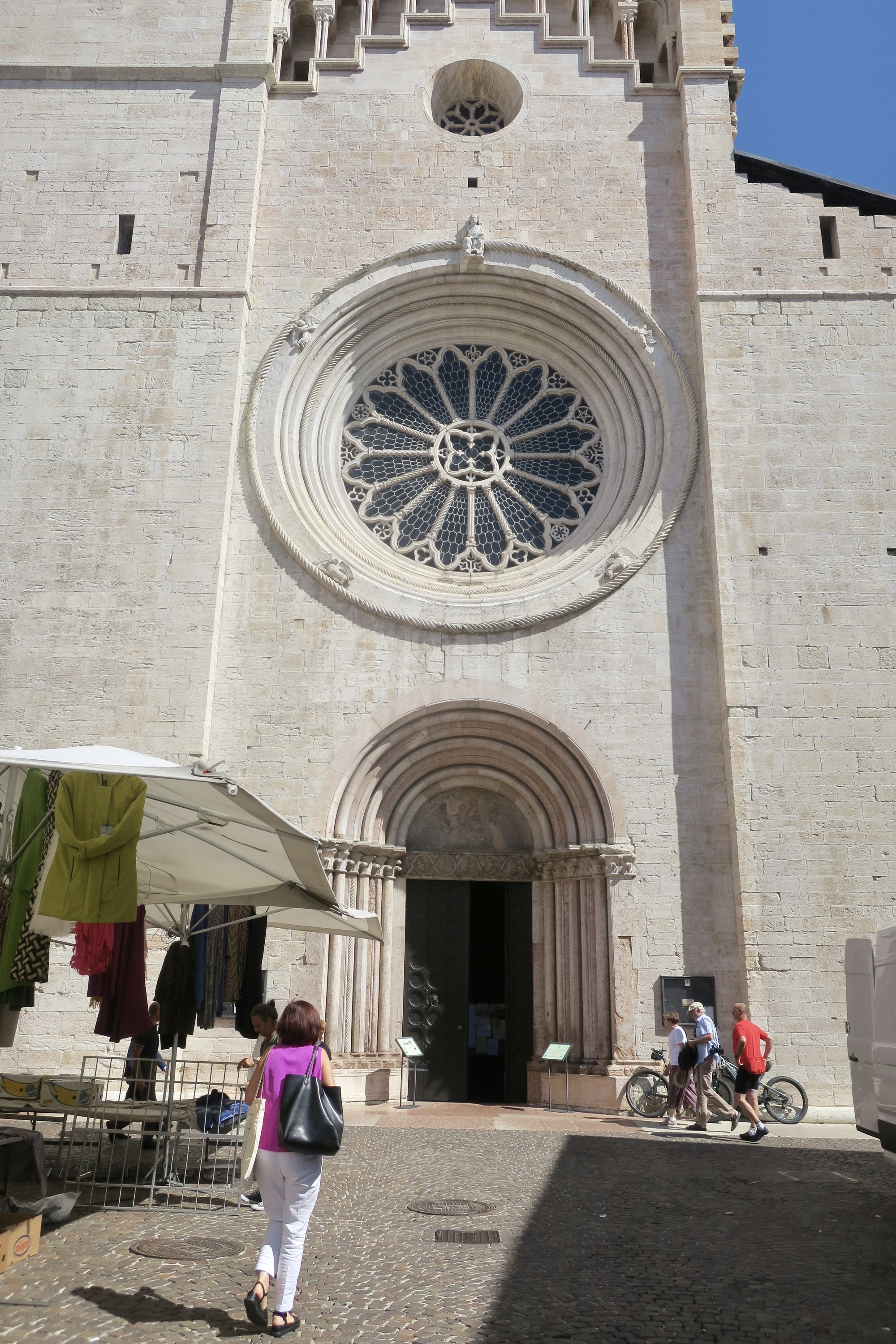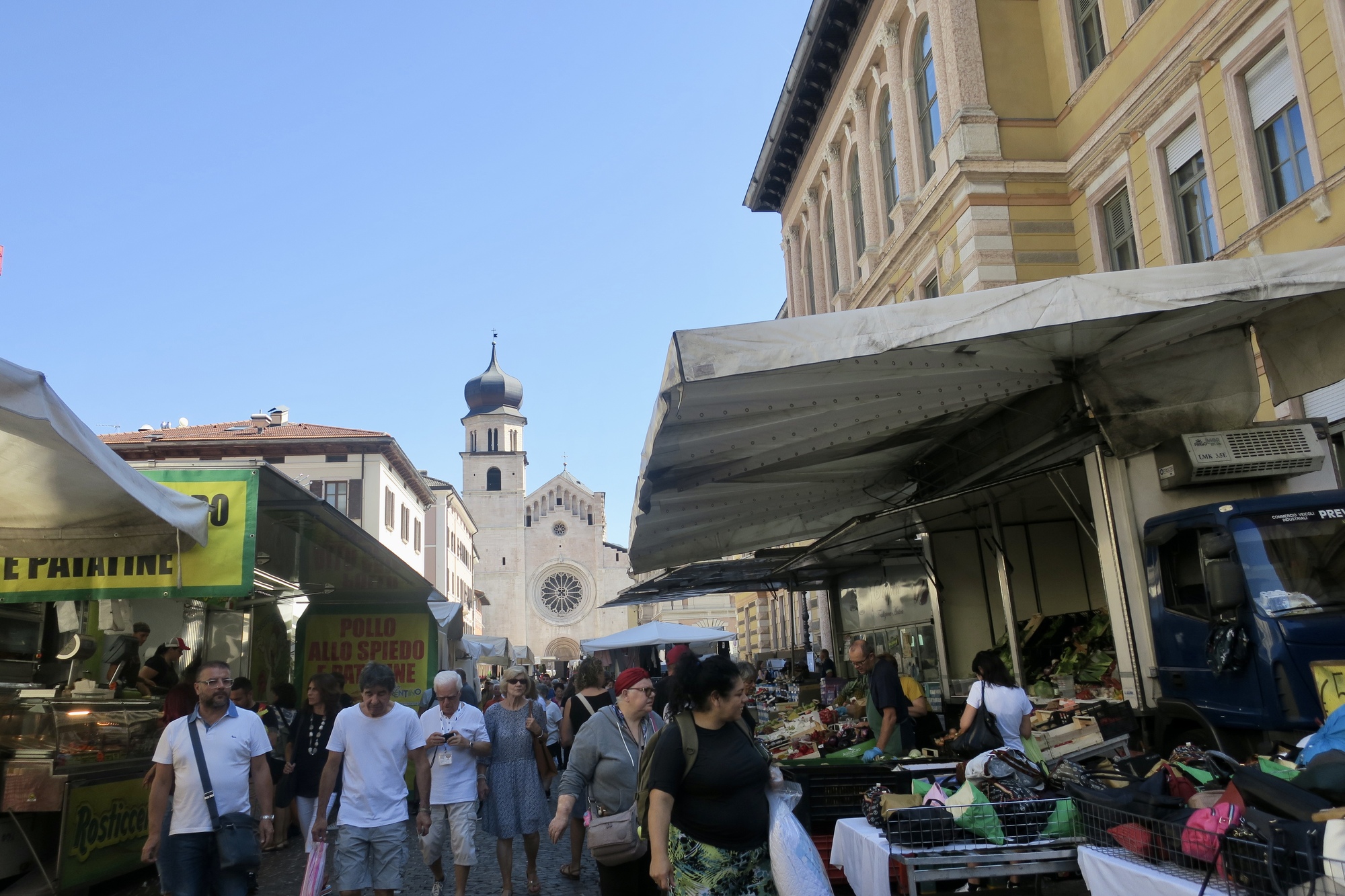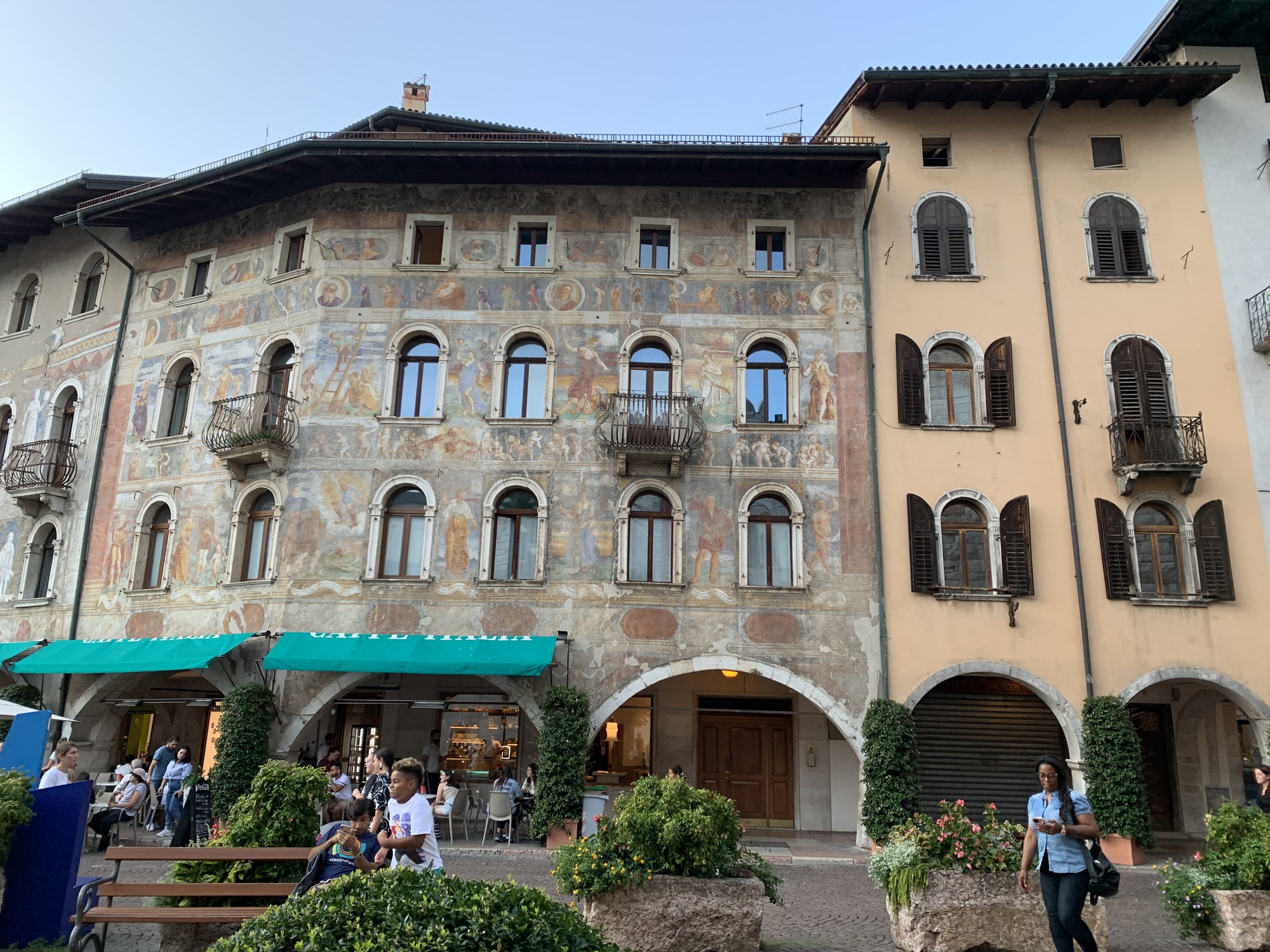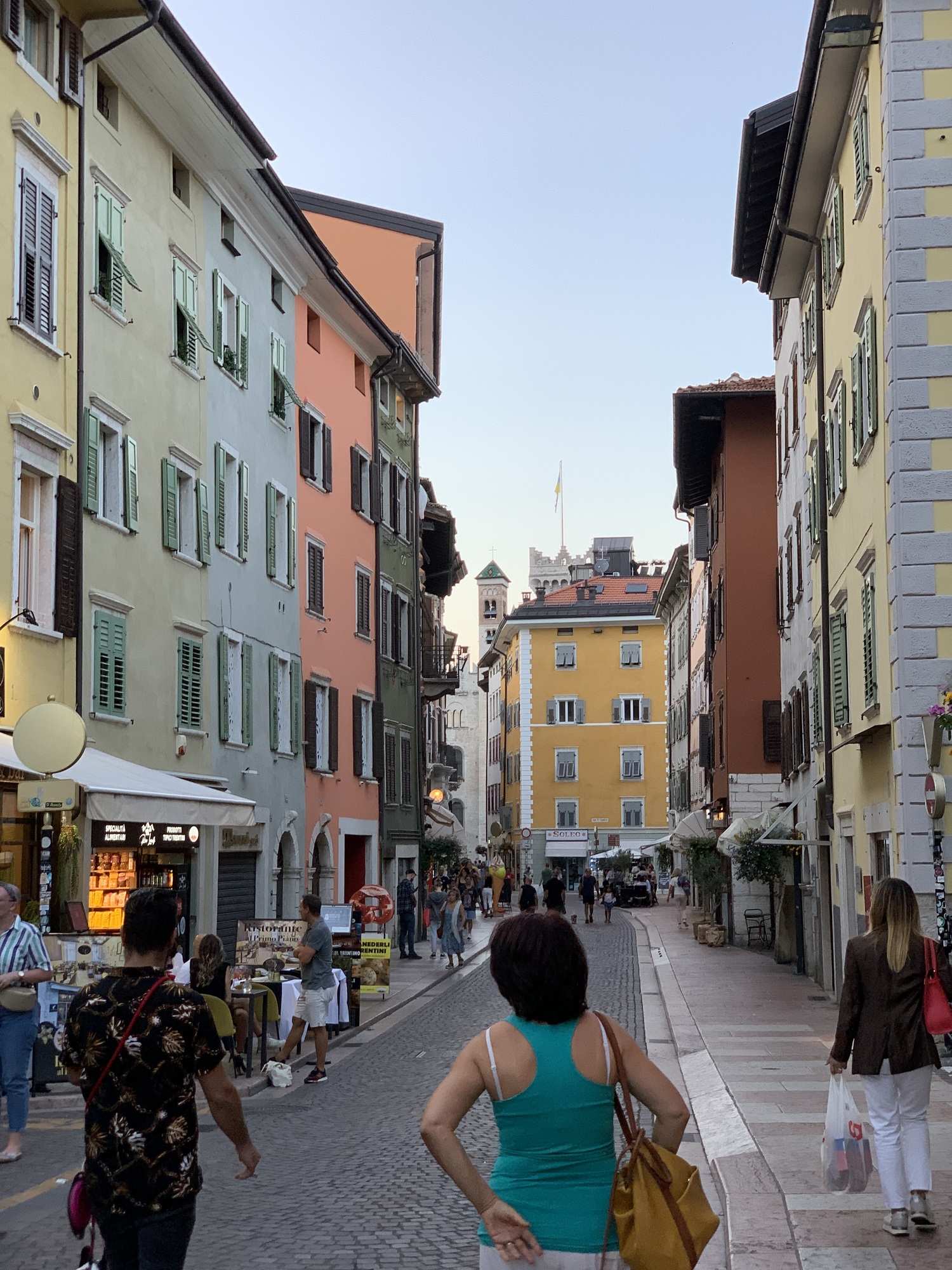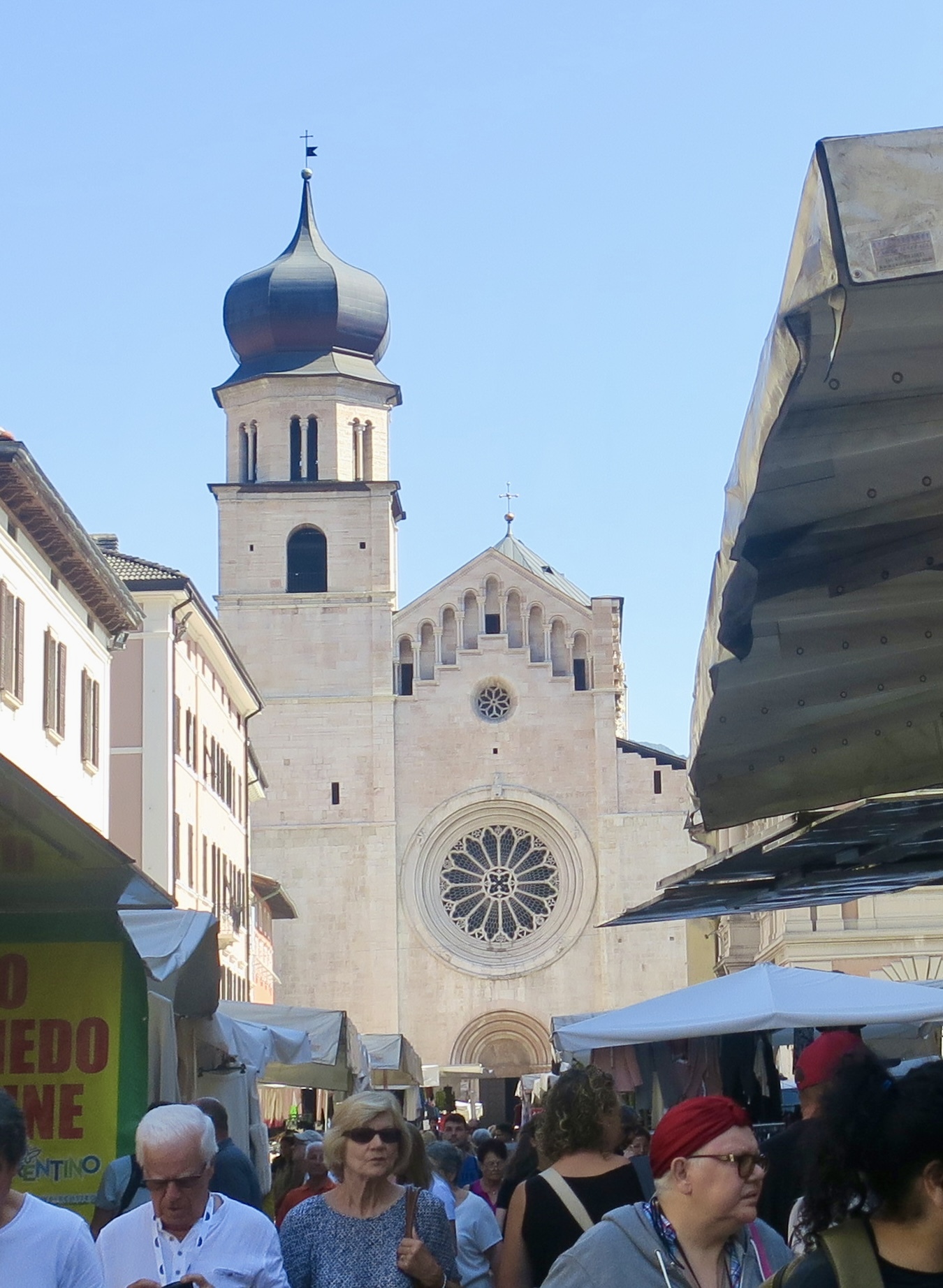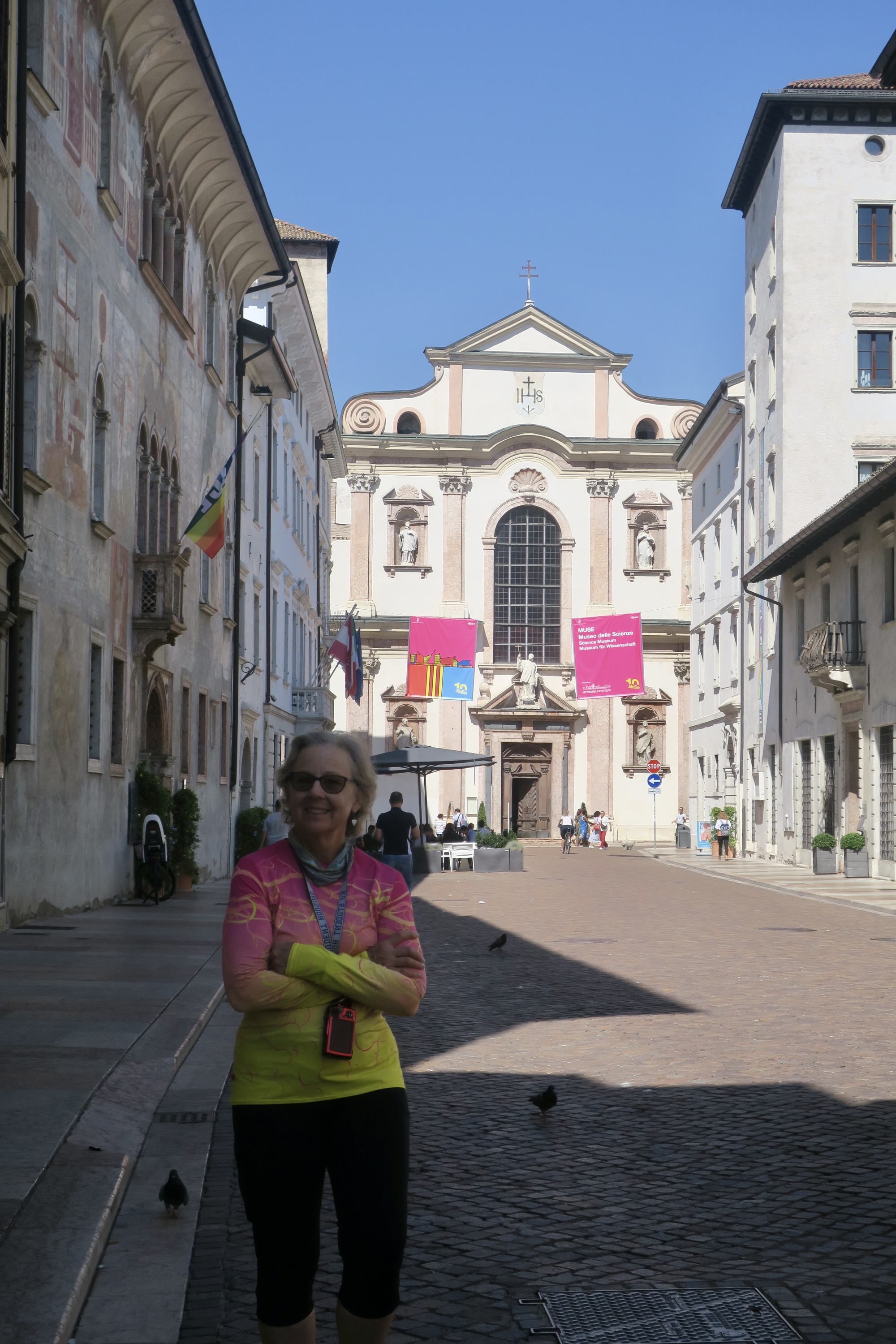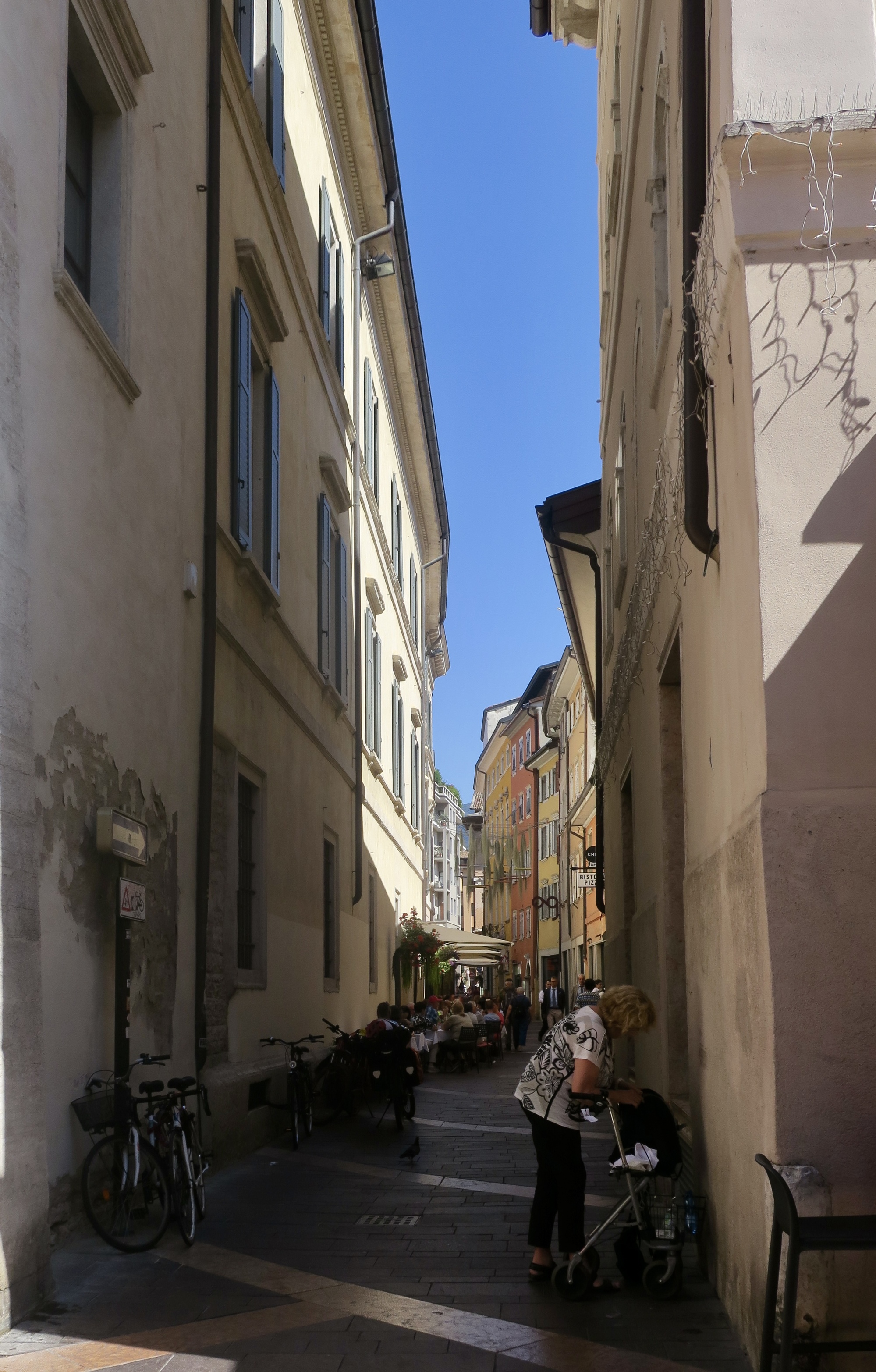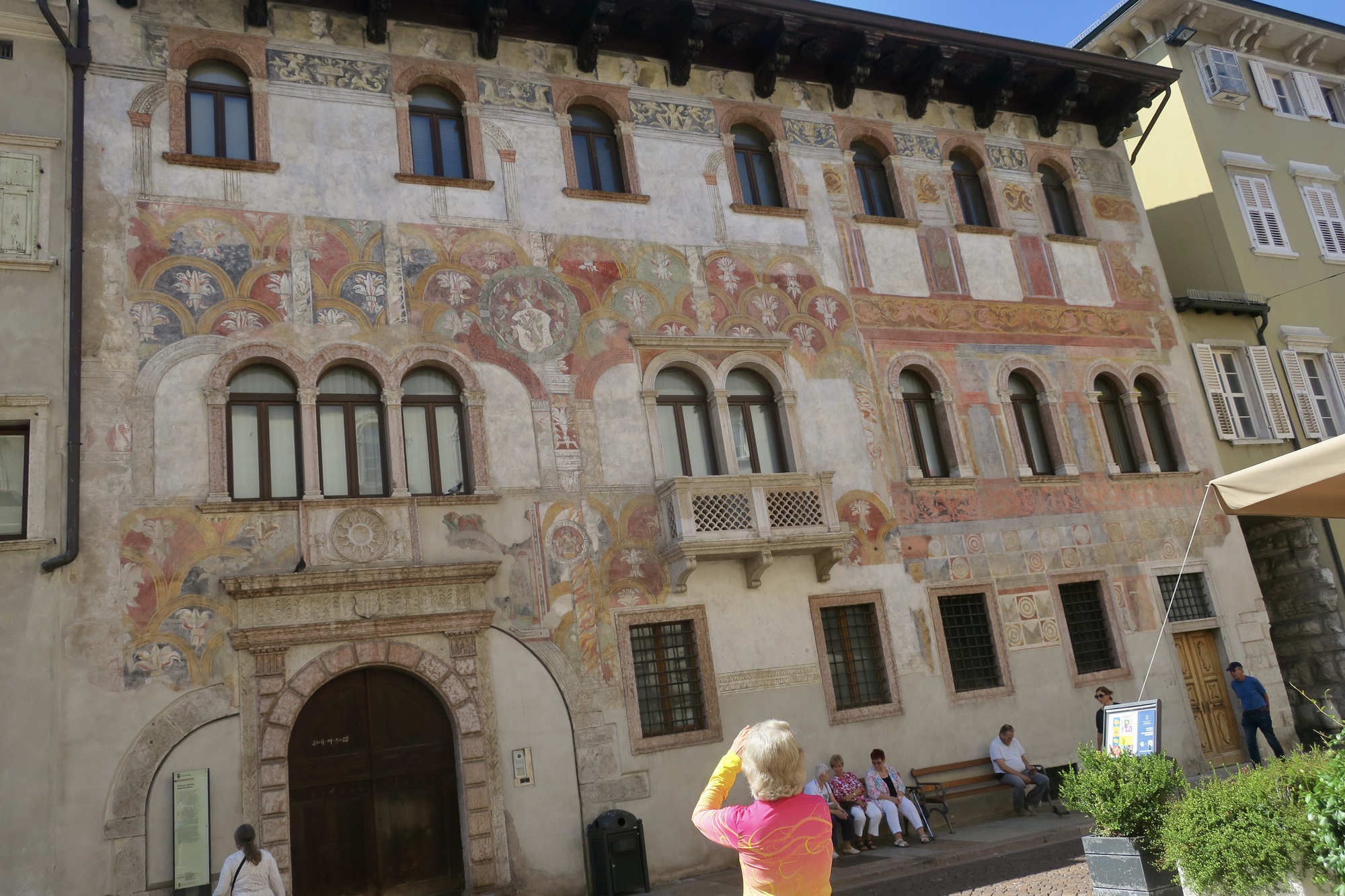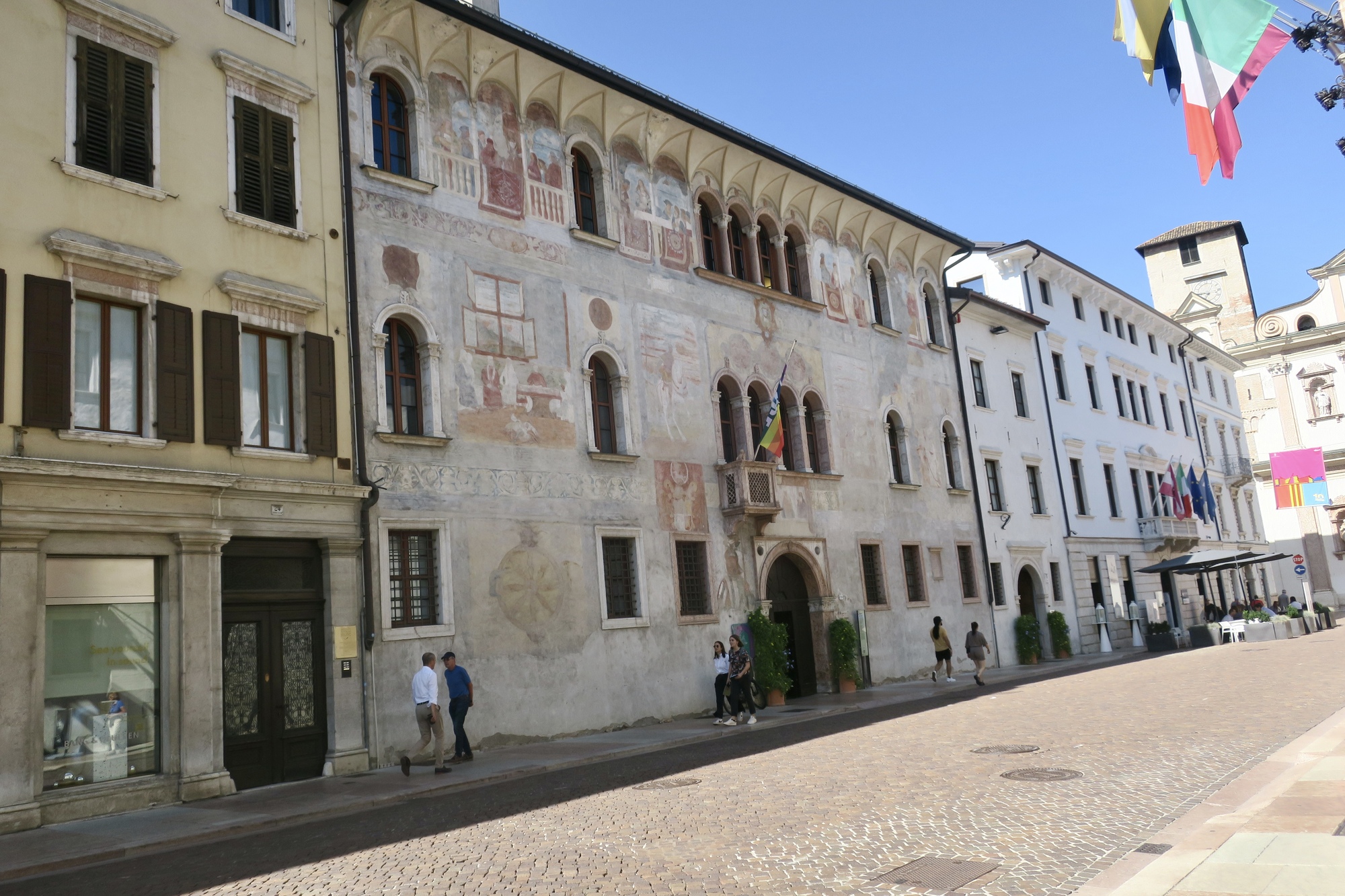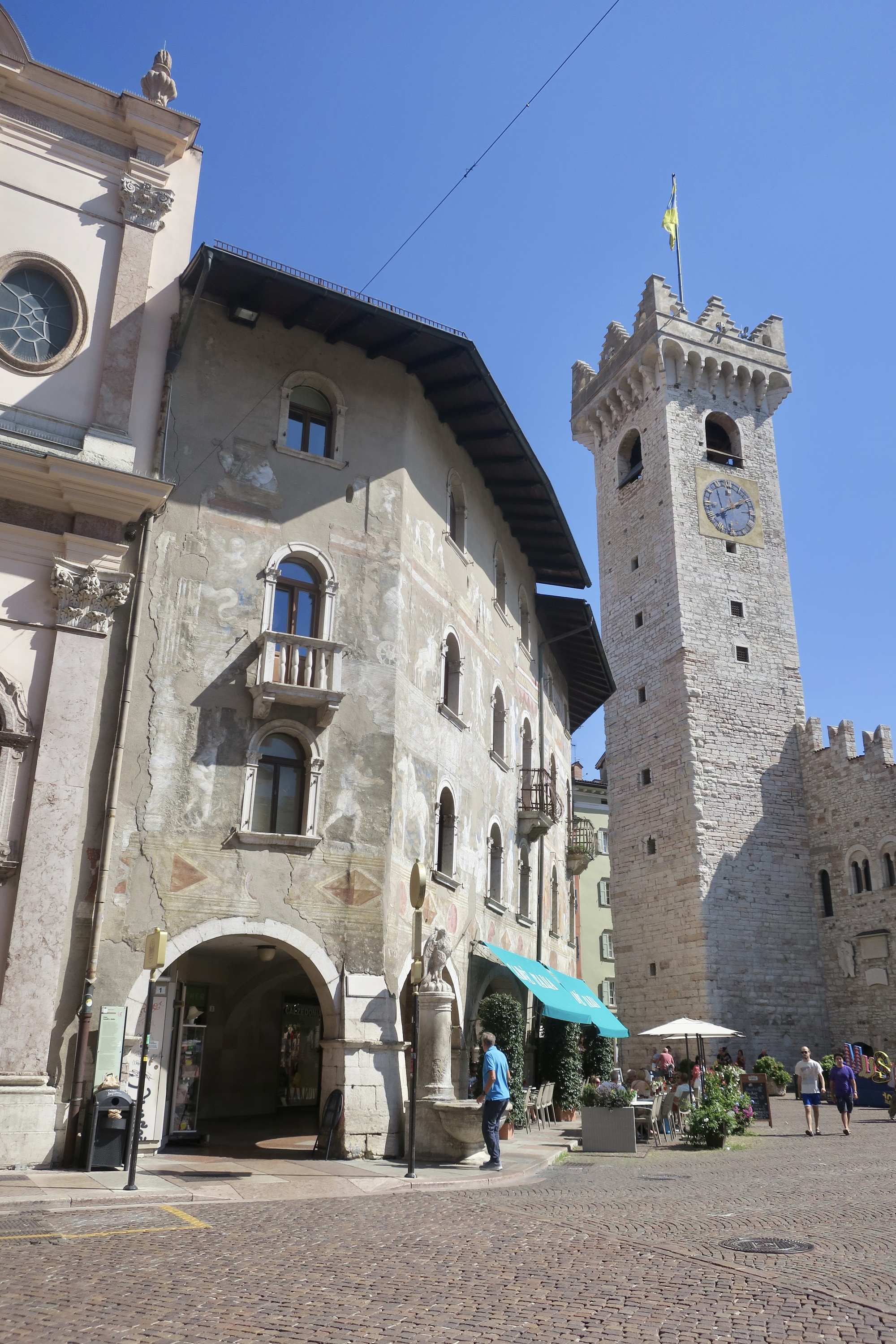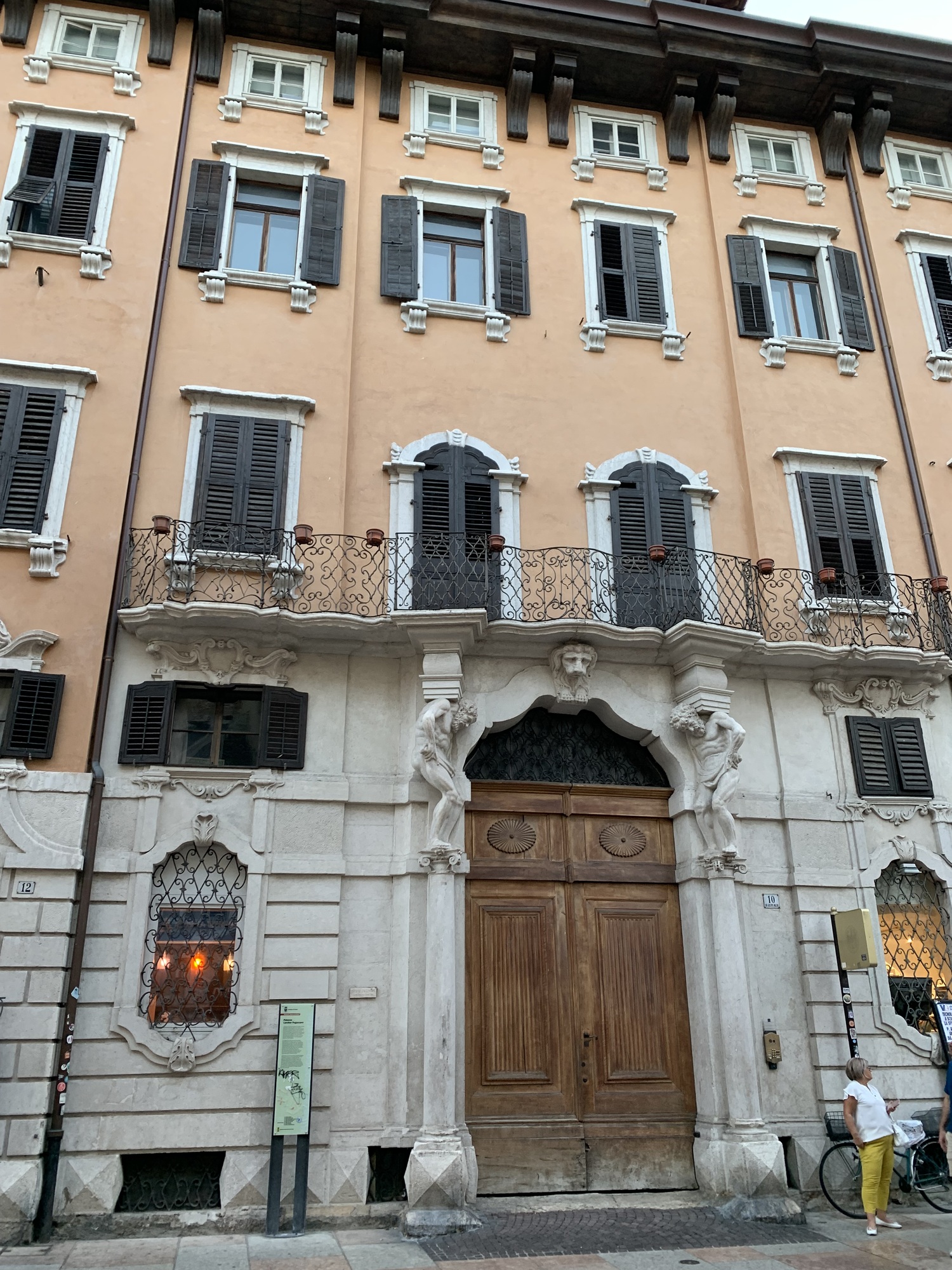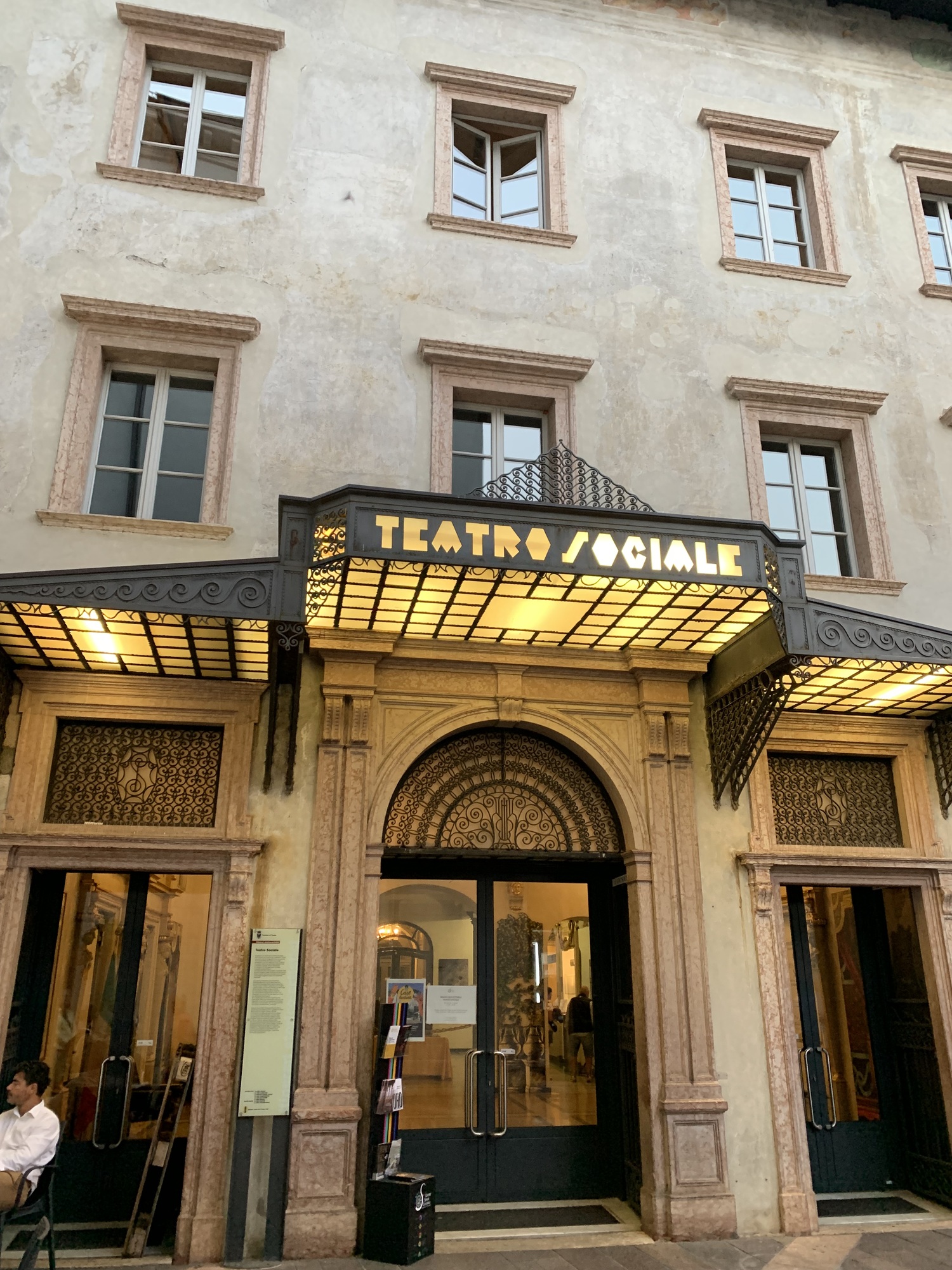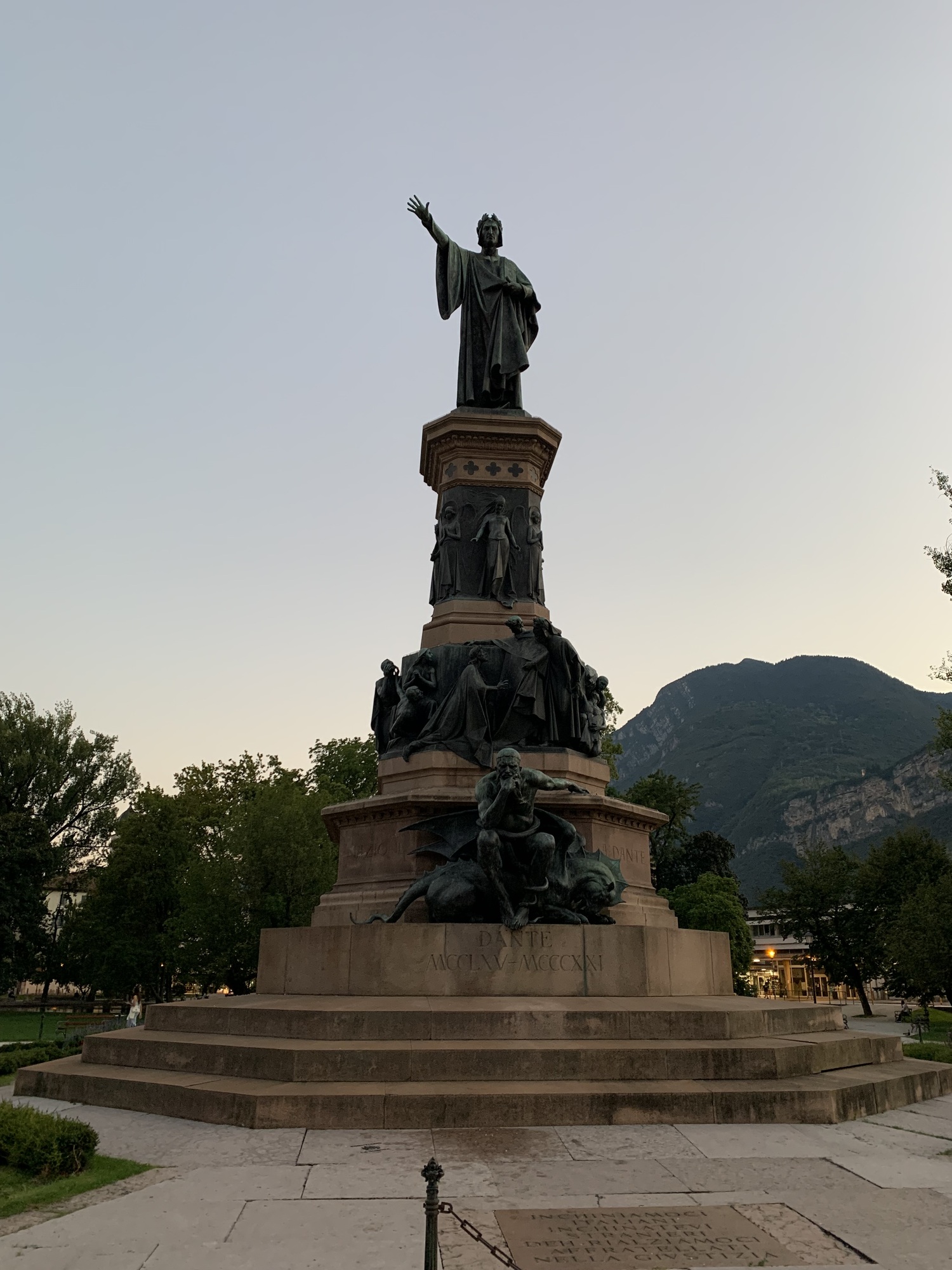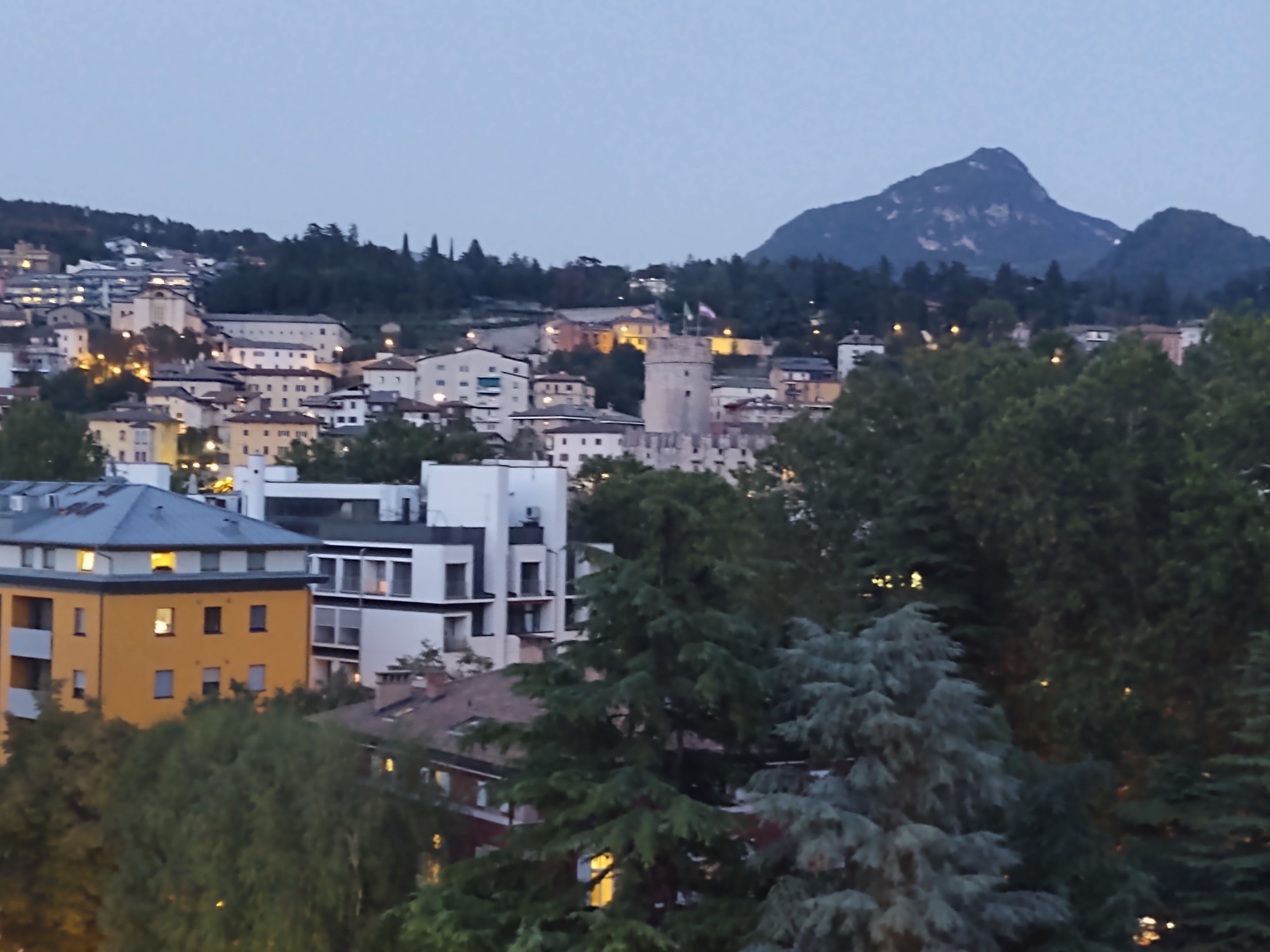September 7, 2023
Riding the levy (Old Railroad) to Trento
Trento, 1st truly Italian City
Until this afternoon when we road through a pass on the way to Trento the towns, language and villages have been more Austrian than Italian.
Most of the day we rode an old railroad levy with the river on one side and the farm valley on the other. More vineyards, some apple orchards and asparagus plants seemed to be the main crops.

| Heart | 1 | Comment | 0 | Link |
Entering old Trento is more like what we expected Italian cities to be like with a large Cathedral, a palace like building (seat of the diocese) and large plaza with lots of eateries spilling into the streets.

| Heart | 0 | Comment | 2 | Link |
1 year ago
We had been hearing Italian spoken all day but the bustle of the market in Trento and the historic buildings of the Piazza Duomo really said Italy. The open air market sold everything from food to clothes to curtains and table cloths.
Frescoes decorate the facades of some buildings and the ceiling of others. Variations of green, orange, yellow ochre and cream create a colorful pallet for the buildings.
We visited the Cathedral of San Vigilio, a Romanesque-Gothic church built in the 12th century over a 6th century temple. It was historically important as the location of the Council of Trent, held to stand against Protestant Reformation.

| Heart | 3 | Comment | 0 | Link |
The façade of the building below features frescos painted in the 16th century, which overlap older works harking back to the 15th century. Its floral decorations and traditional friezes truly express the influence exerted by the Venetian emphasis on colour.
Built in the years bridging the 15th and 16th century, the Palazzo below is one of the first thorough examples of Renaissance architecture in Trento. The anonymous painter who frescoed the façade, expressed a figurative culture akin to that of late 15th century Verona and Vicenza.
The Palazzo below is one of the most important Baroque buildings in the city. Erected during the first half of the 18th century as a residence for the Guarinoni noble family, the palace stood over Medieval building units, as proven by the wall joined on its left side.
Designed in the Neo-classical style, the theater below was built in the courtyard of adjacent Palazzo Festi and was long considered the most beautiful theater in Tyrol.
Today's ride: 30 miles (48 km)
Total: 374 miles (602 km)
| Rate this entry's writing | Heart | 3 |
| Comment on this entry | Comment | 1 |
